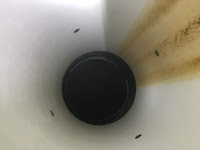Magnetic flow meters are used in many industrial applications. The device is preferred due to being cost-effective, providing accurate volumetric measurement, and an obstruction-less pathway for slurries and aggressive chemicals.
The operation of magnetic flow meters is different than other measurement devices. The post will highlight the basic principles of the device and also shed light on pros, cons, and industrial application.
Basic Principle of Magnetic Flow Meters
Magnetic flow meters are also known as electromagnetic flow meters or mag meters. The principle of magnetic flow meter is based on Faraday’s Law of Electromagnetic induction. The law states that a voltage produced across a conductor as it moves through the magnetic field at right angles is directly proportional to the velocity of that conductor.
The device creates a magnetic field to channel the flow of fluid through a pipe. As the fluid passes through the magnetic field, a voltage signal is created. The faster the fluid flows through the pipe, the higher the voltage produced by the device.
The voltage is picked up by electrode sensors that are located inside the tube. The signals are then conveyed to an electronic transmitter that processes the signal to determine the velocity of the fluid flow.
Benefits of Magnetic Flow Meters

Magnetic flow meters can be installed in shorter meter runs since they don’t require much upstream and downstream runs. The volumetric flow meters have little or no moving parts and require less maintenance making them a cost-effective option for many industrial applications.
Another benefit of the industrial application of magnetic flow meters is that they have a low-pressure drop. Only a slight pressure drop results depending on the length of the tube. This results in more accurate measurement of the liquid flow velocity.
Magnetic flow devices are based on the principle of a linear relationship between the measuring signal and flow rate. In contrast, most other pressure devices work on the principle of a square law relationship. This results in a higher rangeability and accuracy of the magnetic meters.
An important thing that you should keep in mind is that the magnetic flow meters are susceptible to air bubbles. The device cannot differentiate between the process fluid and entrained air. So, the air bubbles will result in an incorrect reading. Air bubbles will cause the meter to give a high reading.
Another thing to remember is that the pipe should be filled completely with water. An incorrect reading will result if the pipe is not full. A solution for this is to install the sensor about 45 to 130 degree angle.
Application of Magnetic Flow Meters
Magnetic flow meters can measure velocities of all conductive liquids including water, slurries, and acids. More specifically, the device can measure velocities of liquids with electrical conductivity greater than 5μS/cm.
Since the flow meter is obstruction-less, the device is generally applied to measure the velocity of dirty, sanitary, abrasive, and corrosive liquids.
However, the device cannot be used for measuring velocities of liquids with low electrical conductivity such as boiler feed water, deionized water, and hydrocarbons. In addition, the device can also not measure the velocity of gasses.
Types of Magnetic Flow Meter
You can find three common types of a magnetic flow meter in the market. The devices are suitable for different industrial application.
Insertion Magnetic Flow Meter
The insertion magnetic flow meter is best for measuring liquid flow in large pipes. The device is simple to install and deliver accurate measurement across a range of pipe sizes.
Inline Magnetic Flow Meter
Inline magnetic flow meter is ideal for situations where high accuracy is necessary. The device is generally used for measuring the liquid flow of slurries, wastewater, food, and pulp.
Unlike insertion magnetic flow meters, inline flow meters don’t require a straight pipe. Moreover, they are best in assessing liquid with higher flow rates.
Low-flow Magnetic Meters
Low-flow magnetic meters are great for assessing liquid with low flow rates. They are designed in a way to prevent fouling. Similar to insertion magnetic flow meters, the low-flow meters do not require straight pipe. In addition, the device can be used in situations where little space is available between the elbow and the meter.
Magnetic flow meters are reliable in measuring velocities of conductive fluid. The devices have a wide range of industrial application, particularly in commodity transfer. They provide accurate reading and undergo less wear and tear. They are a reliable and cost-effective option for measuring the fluid flow of all conductive fluids.
The device can be used to accurately measure the fluid flow of untreated sewage water, processed water, and aggressive chemicals in water treatment, mining operations, and pulp and paper industries.






